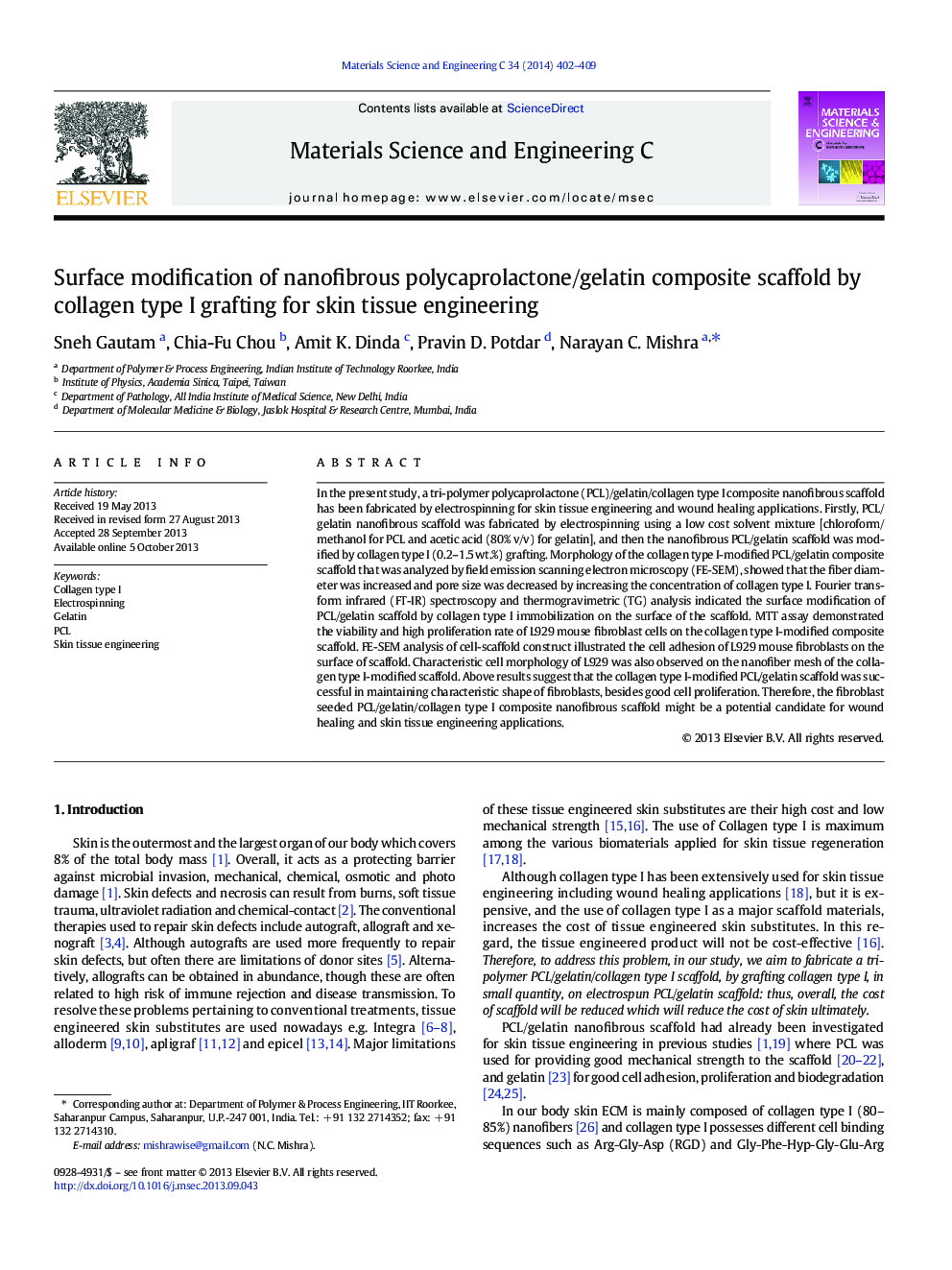| Article ID | Journal | Published Year | Pages | File Type |
|---|---|---|---|---|
| 7870604 | Materials Science and Engineering: C | 2014 | 8 Pages |
Abstract
In the present study, a tri-polymer polycaprolactone (PCL)/gelatin/collagen type I composite nanofibrous scaffold has been fabricated by electrospinning for skin tissue engineering and wound healing applications. Firstly, PCL/gelatin nanofibrous scaffold was fabricated by electrospinning using a low cost solvent mixture [chloroform/methanol for PCL and acetic acid (80% v/v) for gelatin], and then the nanofibrous PCL/gelatin scaffold was modified by collagen type I (0.2-1.5Â wt.%) grafting. Morphology of the collagen type I-modified PCL/gelatin composite scaffold that was analyzed by field emission scanning electron microscopy (FE-SEM), showed that the fiber diameter was increased and pore size was decreased by increasing the concentration of collagen type I. Fourier transform infrared (FT-IR) spectroscopy and thermogravimetric (TG) analysis indicated the surface modification of PCL/gelatin scaffold by collagen type I immobilization on the surface of the scaffold. MTT assay demonstrated the viability and high proliferation rate of L929 mouse fibroblast cells on the collagen type I-modified composite scaffold. FE-SEM analysis of cell-scaffold construct illustrated the cell adhesion of L929 mouse fibroblasts on the surface of scaffold. Characteristic cell morphology of L929 was also observed on the nanofiber mesh of the collagen type I-modified scaffold. Above results suggest that the collagen type I-modified PCL/gelatin scaffold was successful in maintaining characteristic shape of fibroblasts, besides good cell proliferation. Therefore, the fibroblast seeded PCL/gelatin/collagen type I composite nanofibrous scaffold might be a potential candidate for wound healing and skin tissue engineering applications.
Related Topics
Physical Sciences and Engineering
Materials Science
Biomaterials
Authors
Sneh Gautam, Chia-Fu Chou, Amit K. Dinda, Pravin D. Potdar, Narayan C. Mishra,
